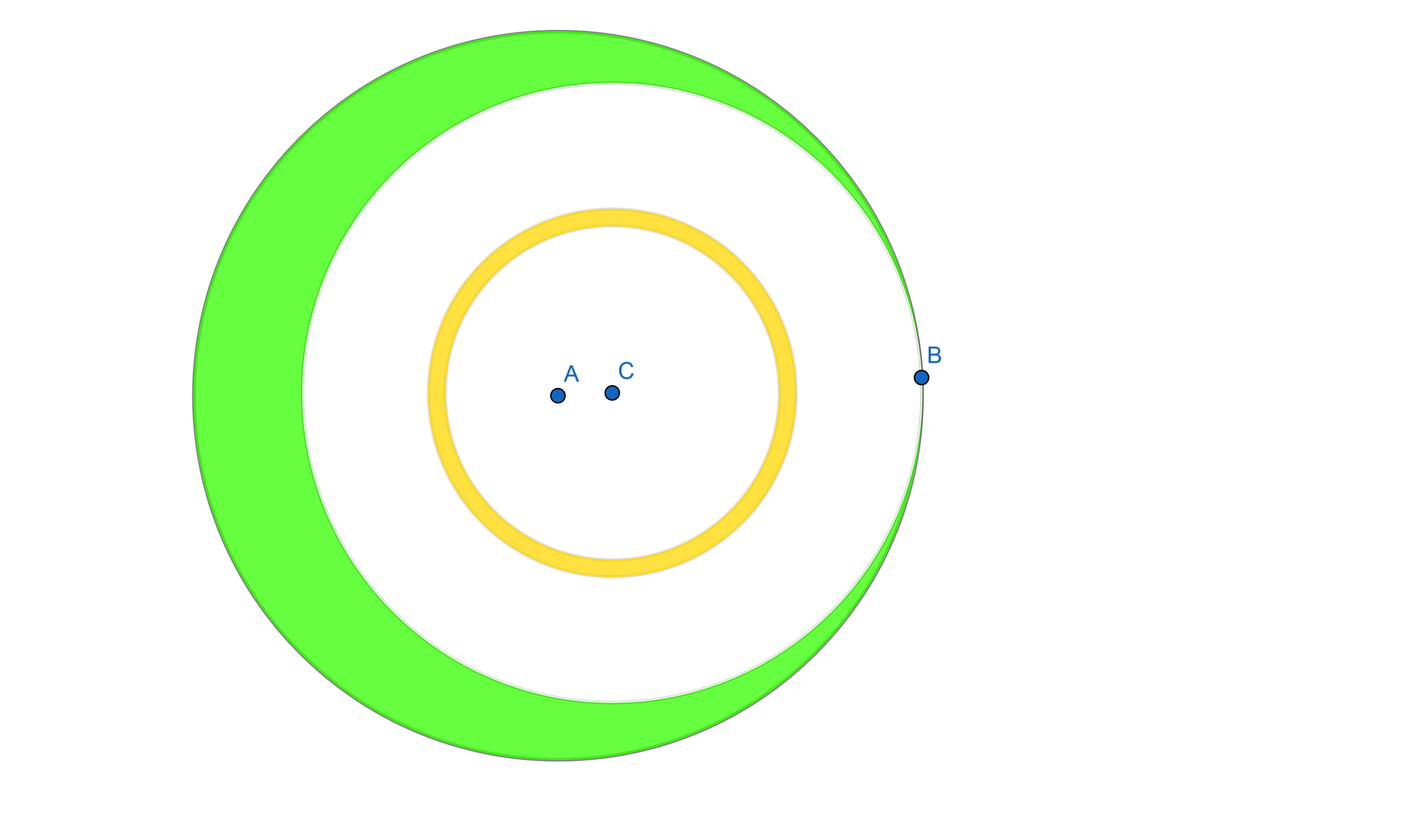Disc on Rough floor (An interesting problem)
 The problem
The problem
A uniform disc of radius rests with one of its flat faces on a horizontal floor. Coefficient of friction between the disc and the floor is . The disc is given an angular velocity about its central vertical axis and simultaneously a horizontal velocity such that . Find a suitable expression for the initial acceleration of the mass center of the disc. (Note: This problem is intended to be solved by hand on paper)
My initial approach, was to neglect the part, and try and get a brute force double integral. The resulting integral however, was non-elementary (turned out it's an elliptic integral). So I abandoned that approach, and tried to incorporate the condition.
My second approach: The instantaneous axis of rotation(IAOR) of the disc is at a tiny distance from the center of the disc. We consider a polar coordinate system, centered at C(the IAOR), with CB being the reference line. The entire disc, is therefore in a state of rotation about C. This gives us an idea of the velocity distribution, which is required to calculate the direction of friction. Note that any circular element of the disc centered C (like the golden element) will have no net force. Therefore, the only unbalanced forces come from the region outside the largest circle centered at C (white region) which still lies within the disc. As C is only very slightly off center compared to the radius of these circles, the required region is basically a ring ( green region as C A), whose linear mass density varies with the parametric angle . The frictional force is given by the integral:
Where dA is an infinitesimal area element, equal to in our coordinates, is the areal mass density of the disc, equal to , and is the unit vector along the velocity of said element . Now, observe that, the area we require is basically a ring centered at our origin, which means . The infinitesimal radial dimension can be evaluated with trig and suitable approximations to give . Putting this into our integral, the force and therefore the acceleration is determined as:
The thing is, though appearing conceptually sound to me, this approach gives half the answer as given in the book. It is possible though unlikely that the book has it wrong. So I want to know
- If this approach is conceptually correct or not.
- If there is an alternate approach to this problem.
When I asked a friend about why he thought the answer isn't right, he said that since the IAOR is a non-inertial frame, we cannot consider forces in that frame without incorporating a pseudo force. However, note that I haven't solved the problem in the frame of the IAOR, I only used a co-ordinate system centered at the IAOR, while the frame is still the ground one. Please help me!
Easy Math Editor
This discussion board is a place to discuss our Daily Challenges and the math and science related to those challenges. Explanations are more than just a solution — they should explain the steps and thinking strategies that you used to obtain the solution. Comments should further the discussion of math and science.
When posting on Brilliant:
*italics*or_italics_**bold**or__bold__paragraph 1
paragraph 2
[example link](https://brilliant.org)> This is a quote# I indented these lines # 4 spaces, and now they show # up as a code block. print "hello world"\(...\)or\[...\]to ensure proper formatting.2 \times 32^{34}a_{i-1}\frac{2}{3}\sqrt{2}\sum_{i=1}^3\sin \theta\boxed{123}Comments
I don't know calculus at all, but is it okay if I bring somebody to help you?
Log in to reply
Yes sure, please do, thanks a ton!
Log in to reply
@Aruna Yumlembam, @ameya singh needs your help!
Yes, I your approach is sound, and the location of C (the IAOR) also is correct. Your friend's remark about it not being an inertial frame, though whitful, is incorrect for the reason you mentioned. It is always a bold thing to say that an answer in a textbook is wrong, but I duplicate your result:
Note that
Below I will assume the disk is moving in the positive y-direction and is rotating anticlockwise. The origin is at the centre M of the disk.
Our approach is to calculate ∫disk−areadF where F is expressed as a function of location. For doing the integral over the area, the easiest way is to let a line segment (connecting C to the edge of the circle) sweep around. C is located at (−e,0) where e=ω0v0. The squared length of the line segment is s2=(x+e)2+y2 Setting x=rcos(ψ),y=rsin(ψ) this becomess2=r2+2ercos(ψ)+e2
we have Ffriction=∫areaAμmgv^dA where v^=(−sin(φ),cos(φ))
We already know the direction of this force, so we need just consider the y-component. Everywhere on the line segment the friction force per area is equally directed, its y-component given by dFfriction=Aμmgcos(φ)dA and dA=21s2dφ
Ffriction=Aμmg∫areacos(φ)dA=Aμmg∫02πcos(φ)21s2(φ)dφ
Ffriction=Aμmg∫02πcos(φ)21(r2+2ercos(ψ)+e2)dφ Because 21cos(φ)(r2+e2) has no net contribution over the interval, the integrand becomes just ercos(φ)cos(ψ) Because e is small compared to r, we can make the approximation cos(ψ)≈cos(φ) and the integral evaluates to erπ
Ffriction≈πr2πμmgrω0v0=rμmgω0v0 a≈rω0μgv0
Finally a remark. If the height of the disk cannot be neglected, then due to deceleration, the front side of the disk is pressed more firmly against the surface than the back, like a braking car. This in turn would cause an uneven distribution of the normalforce, in turn introducing a lateral a acceleration. The assumption here is made that we can ignore this effect.
Log in to reply
Sorry, I'm not very active here, and saw your reply only today. Thanks for your views, and for this interesting solution. Also, I'm now pretty confident the book has it wrong, since John Kaalda's Mechanics problem 20 is effectively the same, and his answer matches ours.